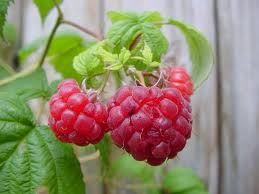 Raspberries are among the most delicious and delicate of berry crops. The fruit can be eaten fresh or processed into jam, jelly, or juice. Surplus fruit can also be frozen.
Raspberries are among the most delicious and delicate of berry crops. The fruit can be eaten fresh or processed into jam, jelly, or juice. Surplus fruit can also be frozen.
Raspberries belong to a large group of fruits known as brambles, all in the plant genus Rubus. While there are other raspberries available, this filw deals with two groups of raspberry – the summer-bearing and the ever-bearing. Both groups offer red or yellow varieties. Raspberries can be grown successfully in most areas of northern U.S.
Raspberries will begin to bloom in late May or early June. Bumblebees, honeybees, and other wild bees are enthusiastic pollinators of brambles. The more bees working your planting, the more fruit you will harvest.
Varieties of Raspberries
 Red and yellow summer-bearing raspberries produce numerous new canes from the base of the plant and from buds produced on the roots. The plants can spread in any direction as new canes pop up. Thus “raspberry patch” is an apt name if the canes are not controlled through pruning. Summer-bearing Red raspberries will produce suckers from the roots. These need to be managed to avoid having your planting spread or become weedy. We talk later about how to control those suckers.
Red and yellow summer-bearing raspberries produce numerous new canes from the base of the plant and from buds produced on the roots. The plants can spread in any direction as new canes pop up. Thus “raspberry patch” is an apt name if the canes are not controlled through pruning. Summer-bearing Red raspberries will produce suckers from the roots. These need to be managed to avoid having your planting spread or become weedy. We talk later about how to control those suckers.
Ever-bearing red or yellow raspberries, also called “fall-bearing” raspberries, are able to initiate flowers during the first year. These cultivars produce fruit at the tips of their canes. During the second year, they can produce a summer crop on the same canes.

